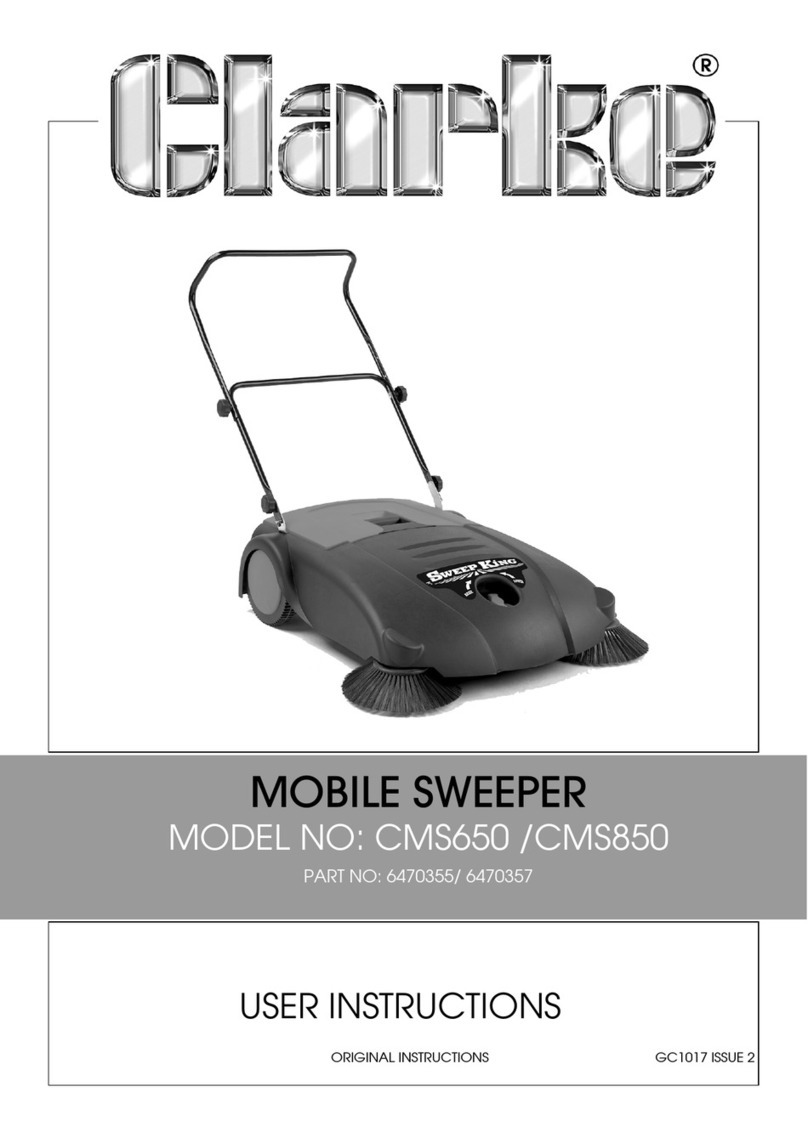ENGLISH
Operator’s Manual - RSW 37 1
TABLE OF CONTENTS
INTRODUCTION......................................................................................................................................................... 2
MANUAL PURPOSE AND CONTENTS .....................................................................................................................................2
TARGET......................................................................................................................................................................................2
HOW TO KEEP THIS MANUAL..................................................................................................................................................2
IDENTIFICATION DATA..............................................................................................................................................................2
OTHER REFERENCE MANUALS..............................................................................................................................................2
SPARE PARTS AND MAINTENANCE........................................................................................................................................2
CHANGES AND IMPROVEMENTS ...........................................................................................................................................2
OPERATION CAPABILITIES......................................................................................................................................................2
CONVENTIONS .........................................................................................................................................................................2
UNPACKING/DELIVERY ............................................................................................................................................ 3
SAFETY ...................................................................................................................................................................... 3
SYMBOLS ..................................................................................................................................................................................3
GENERAL INSTRUCTIONS.......................................................................................................................................................3
MACHINE DESCRIPTION .......................................................................................................................................... 5
MACHINE STRUCTURE ............................................................................................................................................................5
CONTROL PANEL......................................................................................................................................................................7
ACCESSORIES/OPTIONS........................................................................................................................................................7
TECHNICAL DATA......................................................................................................................................................................8
WIRING DIAGRAM.....................................................................................................................................................................9
USE ........................................................................................................................................................................... 10
BATTERY CHECK/SETTING ON A NEW MACHINE...............................................................................................................10
WET OR GEL BATTERY SETTING..........................................................................................................................................11
BEFORE START-UP.................................................................................................................................................................11
MACHINE START AND STOP..................................................................................................................................................12
PARKING BRAKE.....................................................................................................................................................................12
MACHINE OPERATION ...........................................................................................................................................................13
HOPPER EMPTYING...............................................................................................................................................................13
AFTER USING THE MACHINE................................................................................................................................................13
PUSHING/TOWING THE MACHINE........................................................................................................................................13
MACHINE LONG INACTIVITY .................................................................................................................................................13
FIRST PERIOD OF USE ..........................................................................................................................................................13
MAINTENANCE........................................................................................................................................................ 14
SCHEDULED MAINTENANCE TABLE ....................................................................................................................................14
MAIN BROOM HEIGHT CHECK AND ADJUSTMENT.............................................................................................................15
MAIN BROOM REPLACEMENT ..............................................................................................................................................16
SIDE BROOM HEIGHT CHECK AND ADJUSTMENT .............................................................................................................17
SIDE BROOM REPLACEMENT...............................................................................................................................................17
DUST FILTER CLEANING AND INTEGRITY CHECK .............................................................................................................18
SKIRT HEIGHT AND OPERATION CHECK.............................................................................................................................19
HOOD SAFETY SWITCH OPERATION CHECK .....................................................................................................................20
BATTERY CHARGING .............................................................................................................................................................21
FUSE CHECK/REPLACEMENT/RESET..................................................................................................................................22
SAFETY FUNCTIONS .............................................................................................................................................. 23
EMERGENCY PUSH-BUTTON................................................................................................................................................23
HOOD SAFETY SWITCH.........................................................................................................................................................23
DRIVER SEAT MICROSWITCH...............................................................................................................................................23
TROUBLESHOOTING.............................................................................................................................................. 23
SCRAPPING ............................................................................................................................................................. 24
PART LIST ................................................................................................................................................................ 73
































